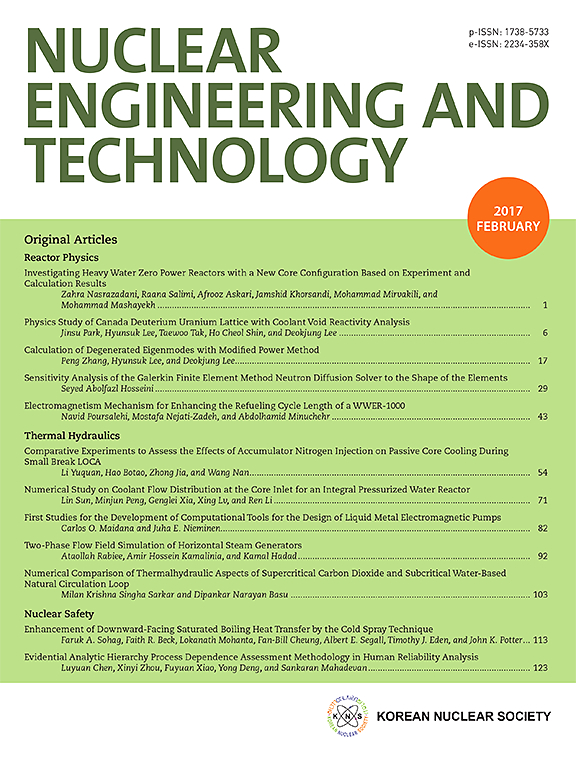大气中子诱导单事件对8nm FinFET人工智能芯片制造的影响
IF 2.6
3区 工程技术
Q1 NUCLEAR SCIENCE & TECHNOLOGY
引用次数: 0
摘要
摘要:随着人工智能(AI)芯片在各种应用领域的快速发展,高能粒子在环境中引起的单事件效应(SEE)已成为人们关注的焦点。其中,集成到AI芯片中的静态随机存取存储器(SRAM)单元由于其高密度位单元架构而对see具有更高的灵敏度。本研究利用中国散裂中子源(CSNS)的大气中子辐照光谱仪(ANIS)作为辐照平台,研究了集成到AI芯片中的8nm FinFET技术制备的SRAM电池的SEE敏感性。在辐照过程中,在不同的操作条件下进行了全面的SEE测试,并将结果与14 nm至28 nm工艺节点的结果进行了系统的比较。研究结果表明,随着半导体技术从14 nm扩展到8 nm,每比特的单事件扰流(SEU)截面减小,而非单比特扰流比例上升。在实验中,检测到多个细胞紊乱(mcu),最大簇大小为7。虽然8nm FinFET架构通过缩小电荷收集区域来增强对seu的固有电阻,但减小的技术节点可能会矛盾地加剧MCU的敏感性,从而导致更高的有效MCU比。因此,SEE与工艺缩放表现出非单调关系,突出了在先进的人工智能芯片中需要先进的错误缓解策略。本文章由计算机程序翻译,如有差异,请以英文原文为准。
Atmospheric neutron inducing single event effects on AI chips manufacturing with 8 nm FinFET
Abstract--With the rapid advancement of artificial intelligence (AI) chips in diverse applications, single event effects (SEE) caused by high energy particles in ambient environment have emerged as a critical concern. Among these, static random access memory (SRAM) cells integrated into AI chips exhibit heightened sensitivity to SEEs due to their high density bit cell architectures. This study investigates the SEE susceptibility of SRAM cells fabricated using an 8 nm FinFET technology integrated into the AI chip, leveraging the atmospheric neutron irradiation spectrometer (ANIS) at the China spallation neutron source (CSNS) as the irradiation platform. During the irradiation, comprehensive SEE tests were conducted under varying operational conditions, with results systematically compared to those from 14 nm to 28 nm process nodes. The findings reveal that as semiconductor technology scales from 14 nm to 8 nm, the single event upset (SEU) cross section per bit decreases while the non-single bit upset proportion goes up. During the experiments, multiple cell upsets (MCUs) were detected with a maximum cluster size of seven. While the 8 nm FinFET architecture enhances intrinsic resistance to SEUs by narrowing the charge collection region, the reduced technology node may paradoxically exacerbate MCU susceptibility, leading to a higher effective MCU ratio. Consequently, the SEE exhibits a non-monotonic relationship with process scaling, highlighting the need for advanced error mitigation strategies in advanced AI chips.
求助全文
通过发布文献求助,成功后即可免费获取论文全文。
去求助
来源期刊

Nuclear Engineering and Technology
工程技术-核科学技术
CiteScore
4.80
自引率
7.40%
发文量
431
审稿时长
3.5 months
期刊介绍:
Nuclear Engineering and Technology (NET), an international journal of the Korean Nuclear Society (KNS), publishes peer-reviewed papers on original research, ideas and developments in all areas of the field of nuclear science and technology. NET bimonthly publishes original articles, reviews, and technical notes. The journal is listed in the Science Citation Index Expanded (SCIE) of Thomson Reuters.
NET covers all fields for peaceful utilization of nuclear energy and radiation as follows:
1) Reactor Physics
2) Thermal Hydraulics
3) Nuclear Safety
4) Nuclear I&C
5) Nuclear Physics, Fusion, and Laser Technology
6) Nuclear Fuel Cycle and Radioactive Waste Management
7) Nuclear Fuel and Reactor Materials
8) Radiation Application
9) Radiation Protection
10) Nuclear Structural Analysis and Plant Management & Maintenance
11) Nuclear Policy, Economics, and Human Resource Development
 求助内容:
求助内容: 应助结果提醒方式:
应助结果提醒方式:


